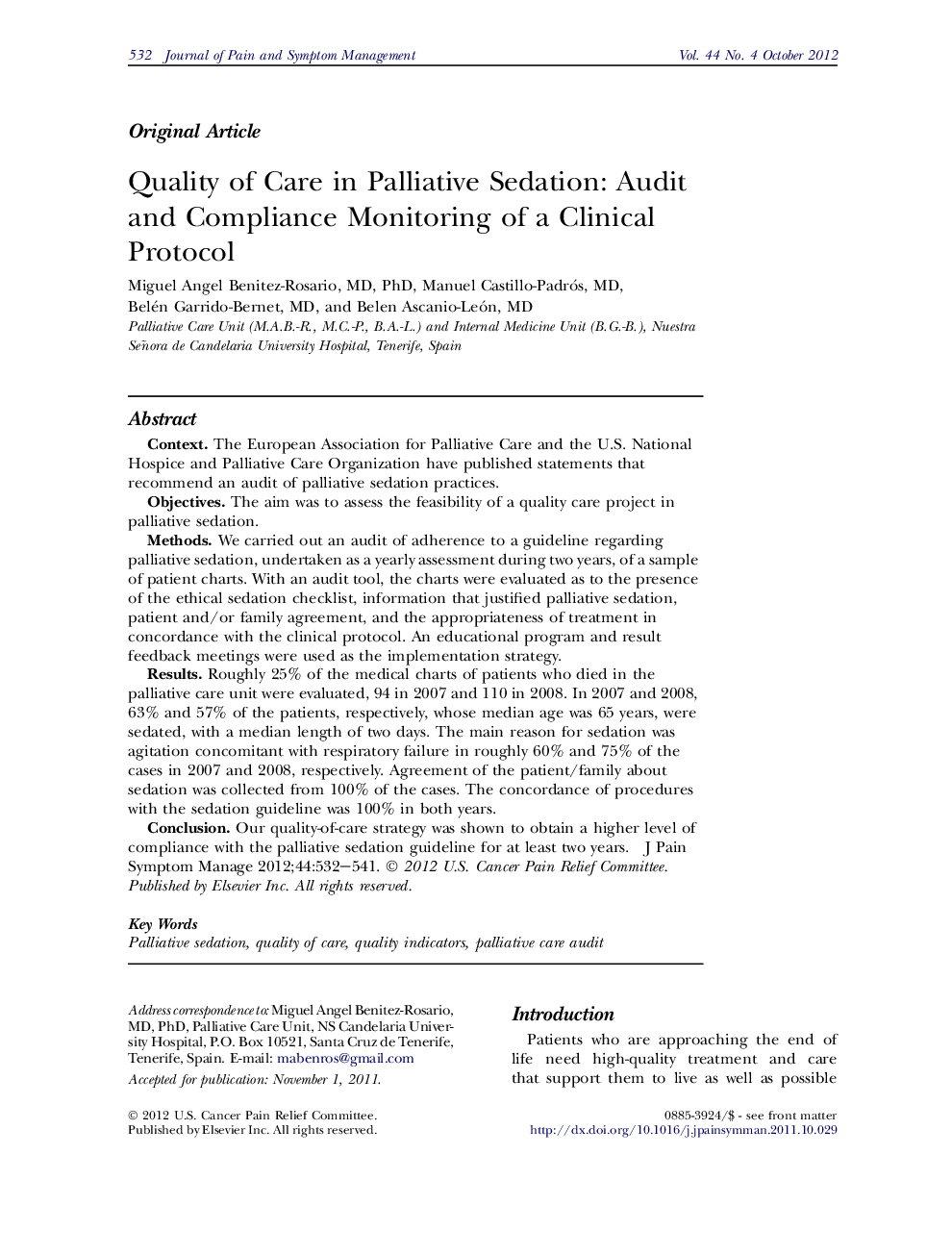| Article ID | Journal | Published Year | Pages | File Type |
|---|---|---|---|---|
| 2724404 | Journal of Pain and Symptom Management | 2012 | 10 Pages |
ContextThe European Association for Palliative Care and the U.S. National Hospice and Palliative Care Organization have published statements that recommend an audit of palliative sedation practices.ObjectivesThe aim was to assess the feasibility of a quality care project in palliative sedation.MethodsWe carried out an audit of adherence to a guideline regarding palliative sedation, undertaken as a yearly assessment during two years, of a sample of patient charts. With an audit tool, the charts were evaluated as to the presence of the ethical sedation checklist, information that justified palliative sedation, patient and/or family agreement, and the appropriateness of treatment in concordance with the clinical protocol. An educational program and result feedback meetings were used as the implementation strategy.ResultsRoughly 25% of the medical charts of patients who died in the palliative care unit were evaluated, 94 in 2007 and 110 in 2008. In 2007 and 2008, 63% and 57% of the patients, respectively, whose median age was 65 years, were sedated, with a median length of two days. The main reason for sedation was agitation concomitant with respiratory failure in roughly 60% and 75% of the cases in 2007 and 2008, respectively. Agreement of the patient/family about sedation was collected from 100% of the cases. The concordance of procedures with the sedation guideline was 100% in both years.ConclusionOur quality-of-care strategy was shown to obtain a higher level of compliance with the palliative sedation guideline for at least two years.
